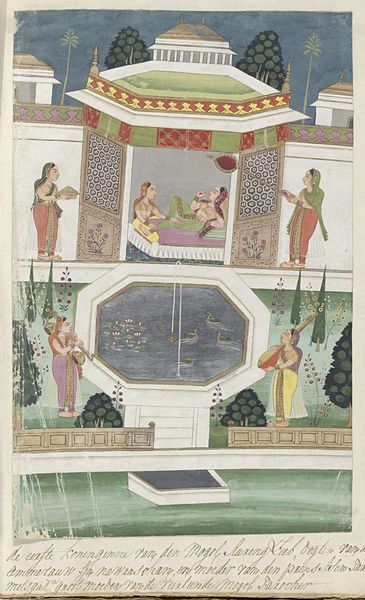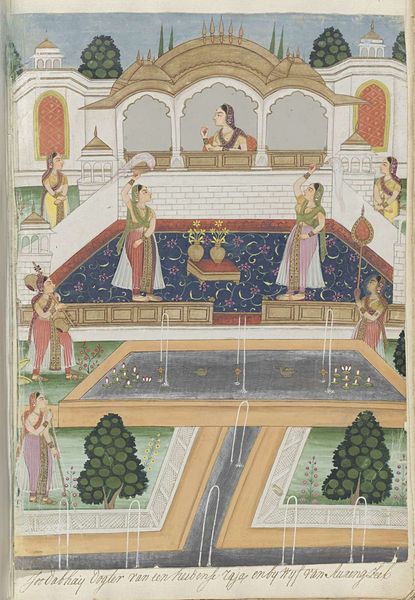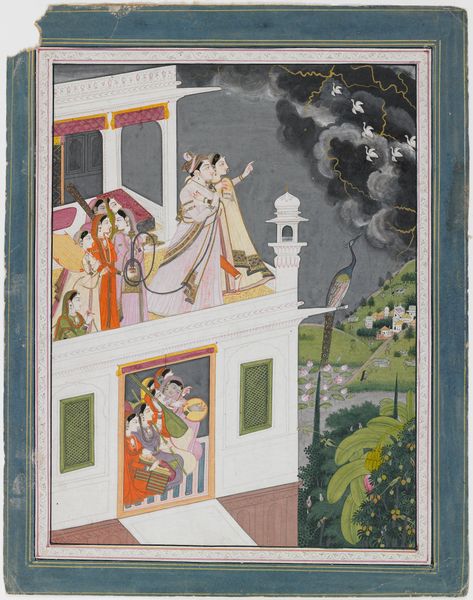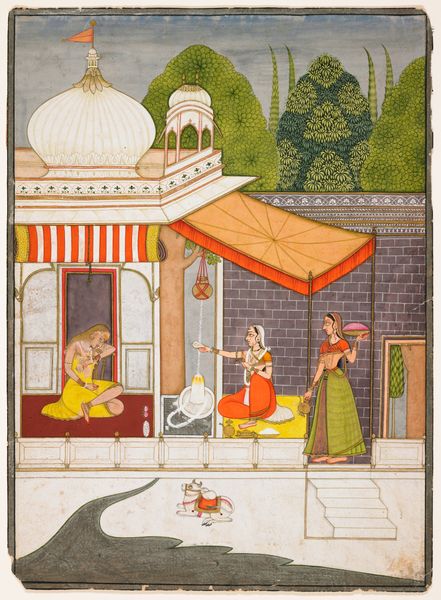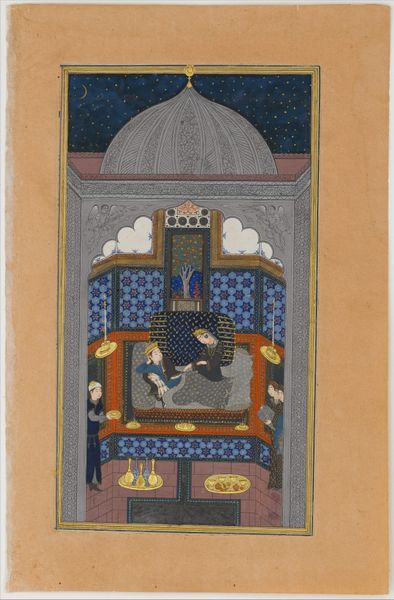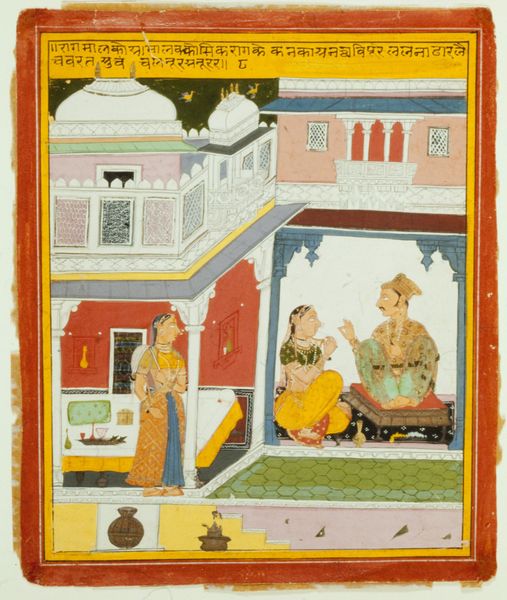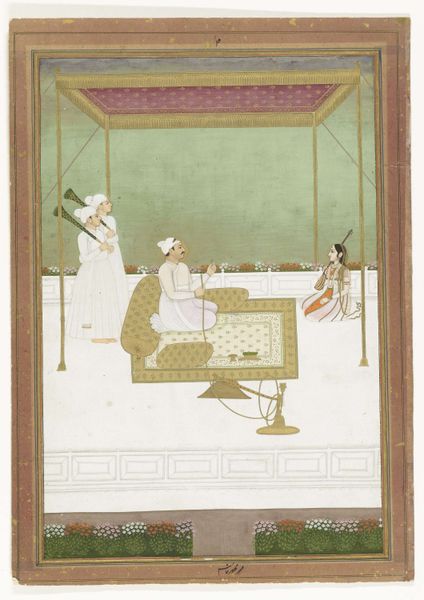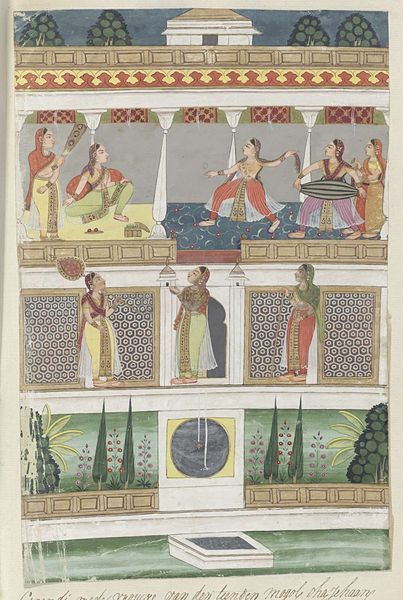
painting, watercolor
#
narrative-art
#
painting
#
asian-art
#
landscape
#
watercolor
#
genre-painting
#
miniature
Dimensions: height 253 mm, width 170 mm
Copyright: Rijks Museum: Open Domain
Curator: Look at this artwork. It is titled "De prinsesse Moenisja," dating back to sometime between 1675 and 1755, created most likely in India, depicting a princess. It appears to be watercolor. Editor: It's such an interesting arrangement! The structure of the buildings is flat and patterned; there is almost a sense of compression or even flattening in the layering of figures in windows and archways and what seem like courtyards and gardens below. The white of the architecture juxtaposed with the jewel tones of the figures is stunning. Curator: Agreed. The piece presents a clear hierarchy, both architecturally and socially. Consider how the very layout emphasizes the spaces, materials, and labor required to support a royal lifestyle, alluding to a larger network of craftspeople and artisans responsible for constructing this opulence. We’re seeing an imported paper, probably European, that signals wealth right from the start, which served as an alternative medium to locally sourced supports like palm leaf or cloth. Editor: Yes, and all those doves resting just below the princess' quarters serve as symbols. Doves historically represent peace, purity, and sometimes even divine intervention. In this context, however, don't they underscore ideas of royal isolation, or even perhaps a gentle confinement in beauty and wealth, with that geometric sundial reminding the viewers of life's limited timeline? Curator: I think what really drives that isolation point home is how the use of perspective emphasizes each figure’s specific task, especially that lone musician strumming her instrument. Editor: Precisely! Each activity is taking place almost completely isolated within their own framed space. One figure, seemingly gazing at herself. Another perhaps overseeing an activity. Each position carries an iconographic weight related to beauty and social order. Curator: The composition is carefully constructed to show this societal separation of labor through perspective—or lack thereof. Editor: Indeed. It seems to reveal how identity, as well as gendered roles, were visualized and possibly performed, and of course communicated, in such a setting, even using the materials employed. Curator: Definitely a fascinating confluence of symbolism and material processes that offer a complex perspective on this world. Editor: Exactly. It is something of a glimpse into not just visual, but a lived reality.
Comments
No comments
Be the first to comment and join the conversation on the ultimate creative platform.
